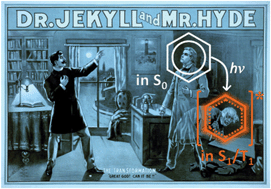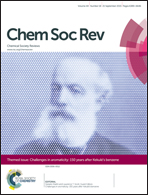The excited state antiaromatic benzene ring: a molecular Mr Hyde?
Abstract
The antiaromatic character of benzene in its first ππ* excited triplet state (T1) was deduced more than four decades ago by Baird using perturbation molecular orbital (PMO) theory [J. Am. Chem. Soc. 1972, 94, 4941], and since then it has been confirmed through a range of high-level quantum chemical calculations. With focus on benzene we now first review theoretical and computational studies that examine and confirm Baird's rule on reversal in the electron count for aromaticity and antiaromaticity of annulenes in their lowest triplet states as compared to Hückel's rule for the ground state (S0). We also note that the rule according to quantum chemical calculations can be extended to the lowest singlet excited state (S1) of benzene. Importantly, Baird, as well as Aihara [Bull. Chem. Soc. Jpn. 1978, 51, 1788], early put forth that the destabilization and excited state antiaromaticity of the benzene ring should be reflected in its photochemical reactivity, yet, today these conclusions are often overlooked. Thus, in the second part of the article we review photochemical reactions of a series of benzene derivatives that to various extents should stem from the excited state antiaromatic character of the benzene ring. We argue that benzene can be viewed as a molecular “Dr Jekyll and Mr Hyde” with its largely unknown excited state antiaromaticity representing its “Mr Hyde” character. The recognition of the “Jekyll and Hyde” split personality feature of the benzene ring can likely be useful in a range of different areas.

- This article is part of the themed collection: Challenges in Aromaticity: 150 Years after Kekulé’s Benzene

 Please wait while we load your content...
Please wait while we load your content...